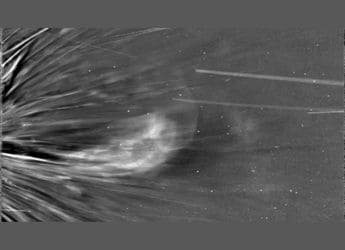- Home
- Mobiles
- Mobiles Features
- Asus ZenFone 6 vs OnePlus 7 Pro vs OnePlus 7: Price, Specifications Compared
Asus ZenFone 6 vs OnePlus 7 Pro vs OnePlus 7: Price, Specifications Compared
The Asus ZenFone 6 supports a 3.5mm audio jack, and packs the largest battery.

Asus ZenFone 6 (left) competes with the OnePlus 7 Pro (centre) and the OnePlus 7 (right)
Asus introduced the ZenFone 6 at an event in Spain on Thursday, and the phone's biggest highlight is its flip camera. It sports a sleek design, a glossy back panel, and a notch-less display. Key specifications of the phone include its mammoth 5,000mAh battery, the latest and greatest Snapdragon 855 processor, up to 256GB of onboard storage, and a 48-megapixel snapper. The Asus ZenFone 6 runs on Android Pie, and will compete against the recently launched OnePlus 7 Pro and OnePlus 7 in the markets.
We pit the Asus ZenFone 6 with the OnePlus 7 Pro and the OnePlus 7 to see which one fares better on paper.
Asus ZenFone 6 vs OnePlus 7 Pro vs OnePlus 7 price
Asus ZenFone 6 price starts at EUR 499 (roughly Rs. 39,100) for the 6GB + 64GB variant, going up to 6GB + 128GB version will retail at EUR 559 (roughly Rs. 43,800), and finally, the top-end 8GB + 256GB variant is priced at EUR 599 (roughly Rs. 47,000). It is available via the Asus eShop, and will start shipping from May 25. Asus has revealed that the phone will be offered in two colours – Midnight Black and Twilight Silver. There is no word on the phone's India availability as of now.
The asking price of the OnePlus 7 Pro starts at Rs. 48,999 for the 6GB RAM + 128GB storage variant, which comes in Mirror Grey colour only. The 8GB RAM + 256GB storage variant of the OnePlus 7 Pro has been priced at Rs. 52,999 and comes in Nebula Blue, Almond, and Mirror Grey colours. The top-end variant of the phone with 12GB of RAM and 256GB of internal storage is priced at Rs. 57,999 and comes in a single Nebula Blue colour option.
The Mirror Grey variant will be up for grabs starting today from Amazon, OnePlus online and offline stores as well as authorised retail partners. The Nebula Blue variant will hit the shelves on May 28, while the Almond colour option will go on sale in June.
The standard OnePlus 7, on the other hand, is priced at Rs. 32,999 for the base 6GB RAM + 128GB storage variant that only comes in Mirror Grey colour. The higher-end variant of the OnePlus 7 packing 8GB of RAM and 256GB of internal storage carries a price tag of Rs. 37,999 and will be available in Mirror Grey and Red colour options. The OnePlus 7 is expected to go on sale in June, but there is no word on a concrete date regarding the market availability.
Asus ZenFone 6 vs OnePlus 7 Pro vs OnePlus 7 specifications
All three phones run on Android Pie with their own respective skins on top. The Asus ZenFone 6 features a 6.4-inch full-HD+ (1080x2340 pixels) IPS screen with 19.5:9 aspect ratio, 92 percent screen-to-body ratio, 600 nits peak brightness, and 100 DCI-P3 colour gamut. The OnePlus 7 Pro, on the other hand, features a 6.67-inch Fluid AMOLED display with Quad-HD+ resolution (1440x3120 pixels), 19.5:9 aspect ratio and a pixel density of 516ppi. The display is also Netflix HDR and HDR10+ certified, supports sRGB as well as DCI-P3 colour gamuts, and is protected by Corning Gorilla Glass 6.
In comparison, the OnePlus 7 packs a smaller 6.41-inch full-HD+ (1080x2340 pixels) Optic AMOLED display with a 19.5:9 aspect ratio, pixel density of 402ppi, and support for sRGB and DCI-P3 colour gamut. It also features Gorilla Glass 6 protection.
Asus ZenFone 6 vs OnePlus 7 Pro vs OnePlus 7 processor comparison
All three phones are powered by the Snapdragon 855 processor. The Asus ZenFone 6 and the OnePlus 7 max out at 8GB RAM, the OnePlus 7 Pro maxes out at 12GB of RAM. Storage on all the three phones maxes out at 256GB, and there's no microSD slot on the OnePlus 7 series. The Asus ZenFone 6 allows for expansion using a dedicated microSD card slot (up to 2TB).
Asus ZenFone 6 vs OnePlus 7 Pro vs OnePlus 7 camera comparison
On the imaging front, as we mentioned earlier, the Asus ZenFone 6 packs a dual camera setup, which houses a 48-megapixel primary shooter with f/1.79, laser focus, and dual-LED flash as well as a 13-megapixel secondary ultra-wide-angle camera. The same setup flips up to become the selfie sensor as well.
![]()
Asus ZenFone 6 features a flip camera that is used as both front and rear cameras
The OnePlus 7 Pro comes equipped with triple cameras highlighted by a 48-megapixel Sony IMX586 sensor with an f/1.6 aperture. It is assisted by a 16-megapixel ultra wide-angle lens with a 117-degree field of view and f/2.4 aperture, coupled with an 8-megapixel telephoto lens with OIS and f/2.4 aperture that is capable of 3x optical zoom. The pop-up front camera module houses a 16-megapixel Sony IMX471 sensor with 1-micron pixels, an f/2.0 aperture, and EIS.
The vanilla OnePlus 7 has a dual rear camera setup consisting of a primary 48-megapixel Sony IMX586 sensor with f/1.7 aperture. It is assisted by a 5-megapixel sensor with an f/2.4 aperture and 1.12-micron pixels. As for the front camera, it is the same 16-megapixel Sony IMX471 sensor used on the OnePlus 7 Pro with 1-micron pixels, an f/2.0 aperture, and EIS.
Asus ZenFone 6 vs OnePlus 7 Pro vs OnePlus 7 battery, fast charging comparison
Asus has included a massive 5,000mAh battery with support for Quick Charge 4.0. Comparatively, the OnePlus 7 Pro packs a 4,000mAh battery with Warp Charge 30 fast charging (5V/ 6A) support. The OnePlus 7 comes equipped with a 3,700mAh battery with 20W (5V/ 4A) fast charging support.
The OnePlus 7 Pro is the thickest and heaviest of the lot at 162.60x75.90x8.80mm and measures at 206 grams. The Asus ZenFone 6 measures 159.10x75.44x8.40, and weighs 190 grams, and the OnePlus 7 is the lightest at 182 grams, and it measures 157.70x74.80x8.20mm. The Asus ZenFone 6 supports a 3.5mm audio jack, while the OnePlus phones lack that support. All three phones support dual-SIM slots and support Bluetooth v5.
Is OnePlus 7 Pro an iPhone, Samsung Killer or yet another pretender? We discussed this on Orbital, our weekly technology podcast, which you can subscribe to via Apple Podcasts or RSS, download the episode, or just hit the play button below.
Get your daily dose of tech news, reviews, and insights, in under 80 characters on Gadgets 360 Turbo. Connect with fellow tech lovers on our Forum. Follow us on X, Facebook, WhatsApp, Threads and Google News for instant updates. Catch all the action on our YouTube channel.
Related Stories
- Samsung Galaxy Unpacked 2025
- ChatGPT
- Redmi Note 14 Pro+
- iPhone 16
- Apple Vision Pro
- Oneplus 12
- OnePlus Nord CE 3 Lite 5G
- iPhone 13
- Xiaomi 14 Pro
- Oppo Find N3
- Tecno Spark Go (2023)
- Realme V30
- Best Phones Under 25000
- Samsung Galaxy S24 Series
- Cryptocurrency
- iQoo 12
- Samsung Galaxy S24 Ultra
- Giottus
- Samsung Galaxy Z Flip 5
- Apple 'Scary Fast'
- Housefull 5
- GoPro Hero 12 Black Review
- Invincible Season 2
- JioGlass
- HD Ready TV
- Laptop Under 50000
- Smartwatch Under 10000
- Latest Mobile Phones
- Compare Phones
- OnePlus 15R
- Realme Narzo 90x 5G
- Realme Narzo 90 5G
- Vivo S50 Pro Mini
- Vivo S50
- OPPO Reno 15c
- Redmi Note 15 5G
- Redmi Note 15 Pro 5G
- Asus ProArt P16
- MacBook Pro 14-inch (M5, 2025)
- OnePlus Pad Go 2
- Poco Pad M1
- Just Corseca Skywatch Pro
- Honor Watch X5
- Acerpure Nitro Z Series 100-inch QLED TV
- Samsung 43 Inch LED Ultra HD (4K) Smart TV (UA43UE81AFULXL)
- Asus ROG Ally
- Nintendo Switch Lite
- Haier 1.6 Ton 5 Star Inverter Split AC (HSU19G-MZAID5BN-INV)
- Haier 1.6 Ton 5 Star Inverter Split AC (HSU19G-MZAIM5BN-INV)




















